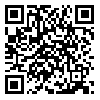دوره 18، شماره 19 - ( 4-1399 )
جلد 18 شماره 19 صفحات 10-1 |
برگشت به فهرست نسخه ها
Download citation:
BibTeX | RIS | EndNote | Medlars | ProCite | Reference Manager | RefWorks
Send citation to:



BibTeX | RIS | EndNote | Medlars | ProCite | Reference Manager | RefWorks
Send citation to:
Noori M, Sadeghi H. Designing volleyball talent identification software based on fuzzy logic. RSMT 2020; 18 (19) :1-10
URL: http://jsmt.khu.ac.ir/article-1-428-fa.html
URL: http://jsmt.khu.ac.ir/article-1-428-fa.html
نوری محمد حسین، صادقی حیدر. طراحی نرمافزار استعدادیابی برپایه منطق فازی در رشته والیبال. پژوهش در طب ورزشی و فناوری. 1399; 18 (19) :1-10
دانشگاه خوارزمی ، mh.noori835@gmail.com
چکیده: (7962 مشاهده)
بهکارگیری ابزار مناسب و روشهای علمی و نظاممند استعدادیابی، به مربیان و متخصصان ورزشی کمک میکند تا به فرآیند شناسایی و پرورش استعدادهای ورزشکاران سرعت دهند. تحقیق حاضر بهمنظور طراحی نرمافزار استعدادیابی برپایه منطق فازی در رشته ورزشی والیبال انجام شده است. در این پژوهش، با انتخاب مهمترین شاخصهای استعدادیابی والیبال از دیدگاه متخصصان در حوزههای پیکرسنجی (قد)، قابلیتهای حرکتی (سرعت)، مهارتی (پرش عمودی با دورخیز) و عملکردی (پرش جفت) و با توجه به ویژگیهای والیبالیستهای پسر نخبه در رده نوجوانان در این شاخصها، الگوریتمی برپایه منطق فازی (بهوسیله بسته ابزار منطق فازی در نرمافزار متلب) طراحی شده است که شاخصهای ذکرشده را بهمنزله ورودی مدل دریافت میکند و والیبالیستهای نوجوان را، در مقایسه با والیبالیستهای نخبه، در این شاخصها، در وضعیتهای نامتناسب با رشته والیبال، نیمهمتناسب، متناسب، استعداد درخشان، و نادر طبقهبندی میکند. پژوهش حاضر، با تلفیق پژوهشهای صورتگرفته، در دو حوزه تعیین شاخصهای مؤثر، و هنجاریابی ورزشکاران نخبه در این شاخصها، نرمافزاری هوشمند برای استعدادیابی در رشته ورزشی والیبال ارائه داده است که قادر است به مربیان و متخصصان ورزش والیبال در انتخاب ورزشکاران مستعد این رشته در ردههای پایه یاری رساند.
نوع مطالعه: پژوهشي |
دریافت: 1399/4/27 | پذیرش: 1399/4/25 | انتشار: 1399/4/25
دریافت: 1399/4/27 | پذیرش: 1399/4/25 | انتشار: 1399/4/25
فهرست منابع
1. Green, M., Houlihan, B. (2005). Elite sport development: policy learning and political priorities. Routledge press Publishing, London and New York. 22-5. [DOI:10.4324/9780203022245]
2. Anshel, M.H., Lidor, R. (2012). Talent detection programs in sport: the questionable use of psychological measures. Journal of Sport Behavior. 35(3):239-66.
3. Zheng, J., Chen, S. (2016). Exploring China's success at the Olympic Games: a competitive advantage approach. Journal of European Sport Management Quarterly. 16(2):148-71. [DOI:10.1080/16184742.2016.1140797]
4. Vaeyens, R., Lenoir, M. (2008). Talent identification and development programmers in sport: Current models and future. Journal of Sport Medicine. 38(9):703-14. [DOI:10.2165/00007256-200838090-00001]
5. Barreiros, A., Côté, J., Fonseca, A.M. (2014). From early to adult sport success: Analyzing athletes' progression in national squads. European Journal of Sport Science. 14(1):178-82. [DOI:10.1080/17461391.2012.671368]
6. Sadeghi, H., Basatnia, R. (2010). Anthropometric and kinematic properties of Hossein Rezazadeh, Iranian world and Olympic champion in snatch weightlifting. Journal of Sport Medicine Studies. 26, 302-309. [Persian]
7. Breitbach, S., Tug, S., Simon, P. (2014). Conventional and genetic talent identification in sports: Will recent developments trace talent? Journal of Sports Medicine. 44(11):1489-503. [DOI:10.1007/s40279-014-0221-7]
8. Abbott, A., Collins, D. (2004). Eliminating the dichotomy between theory and practice in talent identification and development: considering the role of psychology. Journal of Sports Sciences. 22(5):395-408. [DOI:10.1080/02640410410001675324]
9. Zary, J.C., Reis, V.M., Rouboa, A. (2010). The somatotype and dermatoglyphic profiles of adult, junior and juvenile male Brazilian top-level volleyball players. Journal of Science and Sports. 25(3):146-52. [DOI:10.1016/j.scispo.2009.09.002]
10. Wang, L. (2003). Adaptive fuzzy system and control: Design and stability analysis, Prentice Hall Publishing. 3rd Ed.
11. Hong, L. (2001). Fuzzy neural intelligent system: Mathematical foundation and application in engineering. CRC Press Publishing. p.125-6.
12. Noori, M.H., Sadeghi, H. (2013). Designing basketball talent identification software based on fuzzy logic. Journal of Sport Medicine Studies. 13(5):27-38. [Persian]
13. Ebrahim, Kh. (2002). The study of current situation and determining talent identification criteria in volleyball. Research Project, Sport Sciences Research Institute. [Persian]
14. Brown, J. (2003). Sport talent identification. Human Kinetics Publishing, 2nd Edition, 33-43.
15. Papic, V., Rogulj, N. (2009). Identification of sport talents using a web-oriented expert system with a fuzzy module. Expert Systems with Applications. 36(5):8830-8. [DOI:10.1016/j.eswa.2008.11.031]
16. Gall, F., Carling, C., Williams, M., Reilly, T. (2010). Anthropometric and fitness characteristics of international, professional and amateur male graduate soccer players from an elite youth academy. Journal of Science and Medicine in Sport. 13(1):90-5. [DOI:10.1016/j.jsams.2008.07.004]
17. Votteler, A., Honer, O. (2014). The relative age effect in the German football TID programme: Biases in motor performance diagnostics and effects on single motor abilities and skills in groups of selected players. European Journal of Sport Science. 14(5):433-42. [DOI:10.1080/17461391.2013.837510]
18. Vale, P., Ramos, A., Salgado, B., Correia, P., Martins, J. (2009). Differences in technical skill performance of Portuguese junior soccer players according to competitive level and playing position. Faculty of Sport Science, University of Porto, Porto, Portugal. 10-44.
ارسال پیام به نویسنده مسئول
| بازنشر اطلاعات | |
 |
این مقاله تحت شرایط Creative Commons Attribution-NonCommercial 4.0 International License قابل بازنشر است. |







